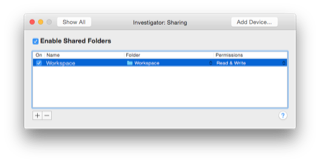[ This is a reposting of my teaching blog post previously hosted on http://users.ox.ac.uk/~coml0454.
NOTE: I no longer teach at University of Oxford and this is a description of how I used to teach the course.]
Summary
This post describes how to create a Lubuntu-based virtual machine (VM) to be used when teaching of computer forensic analysis and investigation. The post discusses the background to the use of the VM, how the VM is created in VMware Fusion, and how Sleuthkit and other Linux-based utilities are installed. The post finishes with some suggestions on how the VM issued in class can be configured for the classroom teaching computers. This post assumes the reader is familiar with Linux and a virtualization application such as VMware. [While the applications and utilities used are appropriate for a computer forensics investigation, the use of a VM is most probably not an appropriate approach for setting up a production system to undertake computer forensic analysis and investigation because of the overhead the VM adds.]
Background
The FOR module on the Software and Systems Security programme includes a number of classroom exercises associated with the extraction and analysis of computer system artifacts. The assignments may also involve the extraction and analysis of computer system artifacts. To encourgage understanding of the extraction and analysis process the exercises use Linux and Sleuthkit utilities which are run from the command line. To allow the transfer of understanding and skills from the classroom exercises to the assignment, the students use a Linux-based VM for the classroom exercises and receive a copy of that VM for use when undertaking the assignment.
Linux and Sleuthkit have been choosen as there are no licensing issues associated with their distribution. Ubuntu distributions have been used for previous VMs used during the FOR module. The VM needs to be kept reasonbly up to date while at the same time keeping the size of the virtual machine reasonably small as well. Using the latest main Ubuntu distributions has resulted in the size of the virtual machine increasing. As a consequence I have choosen the Lubuntu 15.04 distribution to build the “Investigator” virtual machine. Lubuntu is a light(er) weight Ubuntu distribution.
VM Creation
In this instance, the Investigator VM is created in VMware Fusion 7 using Lubuntu 15.04. The lubuntu-15.04-desktop-amd64.iso can be downloaded from Ubuntu here.
The VM is created using the standard VMware Fusion method, with the type of operating system set to Ubuntu 64-bit. The VM is configured with the following settings:
- VM name = Investigator
- Memory = 1GB
- Hard Disk = 20GB in 2GB blocks
- Network adapater host = NAT
- Compatibility = VMware Fusion 5 / VMware Workstation 9 (Hardware Version 9)
In order to enable the compatibility with VMware Fusion 5 I had to remove the camera and the SATA devices in the VM’s settings, and configure the CD to use an IDE device.
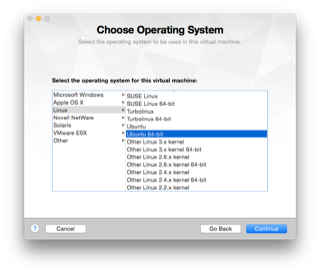
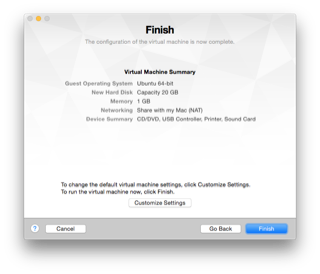
Once the VM is ready to go, start the VM. (I ignore the VMware Fusion request to upgrade as I want the VM to be able to run on earlier versions of the VMware applications.) The Lubuntu installer will ask you to select a language. Next, select “Install Lubuntu” from the menu.
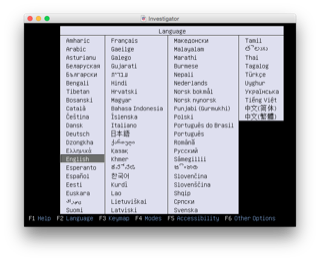
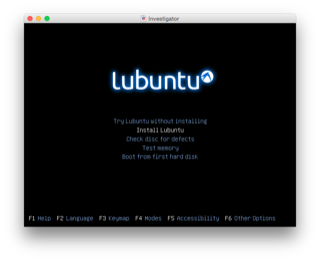
The installer will then ask you to choose a language for the guest operating system installation. Next you select the prepartion settings.
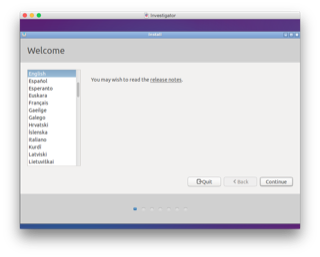
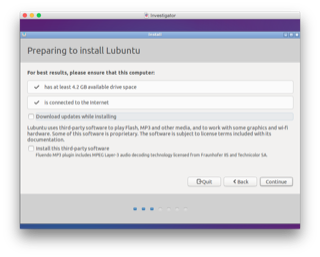
Next set the type of installation. Followed by confirming the disk partition arrangements.
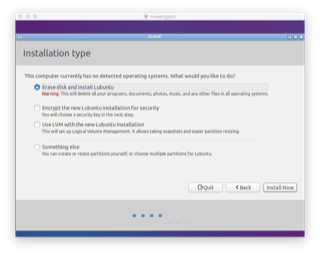
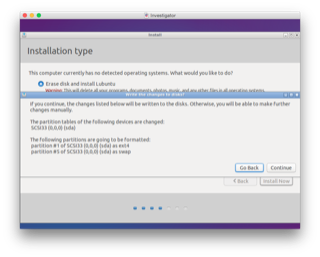
Next set the timezone. Followed by setting the keyboard layout. (Note If you cannot see Continue button. You can grab the menu bar to move the pane to see the Continue button.)
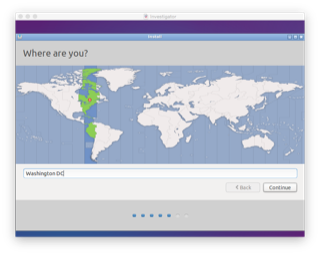

Then set the user account details.
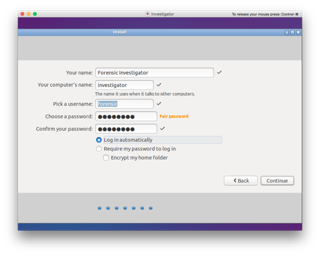
At this point the Lubuntu installation is configured with the following parameters:
- TZ = Washington, DC
- Keyboard = US
- Hostname = investigator
- Username = Forensic Investigator (forensic)
- Password = oucl2015
- Login = automatic
The installation will continue and download the necessary files. Once the Lubuntu installation is complete, restart the VM.
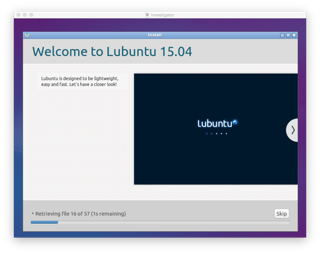
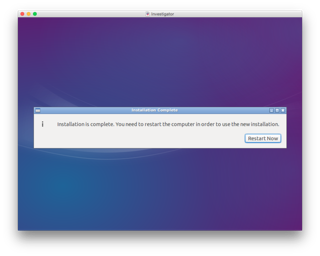
On reboot, Software Updater will start running. Select it and open the Settings tab. At this point I disable automatic updates. I also ignore the request to update as I do it using the command line later.
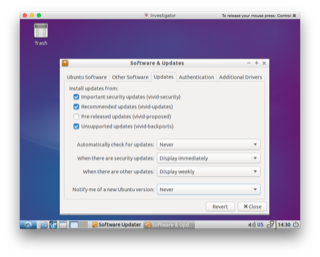
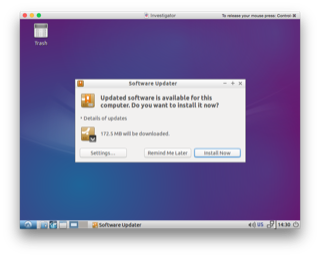
Now open LXTerminal (Terminal) and add it to the Desktop.
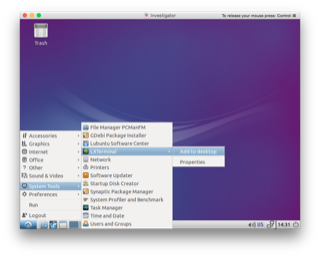
To add LXTerminal to the Panel, right click on the Panel to open the Panel Preferences. Then select the Panel Applets tab.
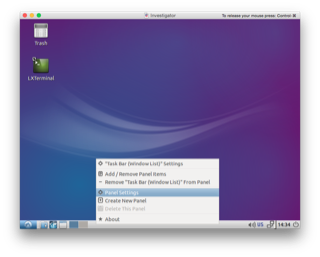
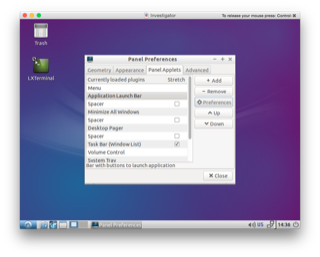
Select the Application Launch Bar and click the Preferences button. Then select LXTerminal in the System Tools list in the Installed Applications pane and click Add to include it in the list of Launchers.
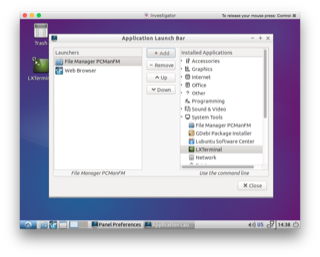

Install Updates
Open LXTerminal and using the command line, install the lastest Lubuntu distribution updates before we build the tools.
sudo apt-get update && sudo apt-get upgrade && sudo apt-get dist-upgrade
sudo apt-get clean
sudo apt-get reboot
Edit .bashrc
I like to have a colour prompt in the terminal so I edit .bashrc and enable the colour prompt.
nano .bashrc
Remove the # so this line now reads as:
force_color_prompt=yes
Edit the colours and prompt layout as you please. This is my prefered prompt - green user and host name, blue working directory and prompt on a new line so you have the maximum space to type a command before the line wraps around:
PS1=’${debian_chroot:+($debian_chroot)}[\033[01;32m]\u@\h[\033[00m]:[\033[01;34m]\w\n[\033[00m]$ '
Once .bashrc is edited the changes can be implimented immediately by issueing the following command in the terminal:
source .bashrc
Install Build Essential Tools & Headers
sudo apt-get install git
sudo apt-get install build-essential
sudo apt-get install linux-headers-$(uname -r)
sudo apt-get autoremove
Install VMware Tools
At present VMware Tools does not build correctly on a number of the Linux distributions. The consequence here is that host folders cannot be shared with the guest VM. Fortunately Rasa and his collaborators have developed a solution that can be found at https://github.com/rasa/vmware-tools-patches.
cd /tmp
git clone https://github.com/rasa/vmware-tools-patches.git
cd vmware-tools-patches/
./download-tools.sh 7.1.2
./untar-and-patch.sh
./compile.sh
sudo reboot
The 7.1.2 above in the command ./download-tools.sh 7.1.2 corresponds to the version number of VMware Fusionthat I am using.
Once this has compiled you will be able to share host folders with the guest VM.
Install Sleuthkit and its Dependencies
cd ~
sudo apt-get install sleuthkit autopsy
Install Additional Applications
In addition to using Sleuthkit the exercises involve the analysis of network and Internet artifacts, which requires the installation of additional applications in the VM.
sudo apt-get install gparted wireshark net-tools tcpstat geeqie tcptrace tcpflow imagemagick etherape
sudo apt-get install feh firefox sqlite sqlite3
sudo apt-get install foremost whois
sudo apt-get install libimage-exiftool-perl
Add SQLite Manager To Firefox
SQLite Manager is a useful extension to Firefox for looking at SQLite databases, such as those used to store the browser history on later versions of Firefox. To install SQLite Manager, launch Firefox and add SQLite Manager via Firefox’s Add-ons Manager. (You may have to make the Menu Bar visible.) SQLite Manager will appear in the Tools Menu after restarting Firefox.
- Firefox > Tools > Add-ons Manager
- Search for SQLite Manager and install it
- Restart Firefox
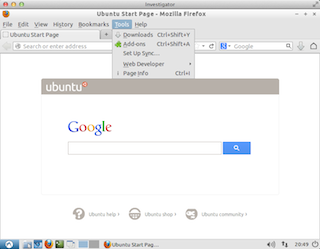
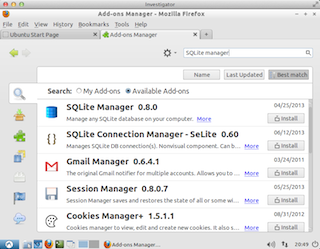
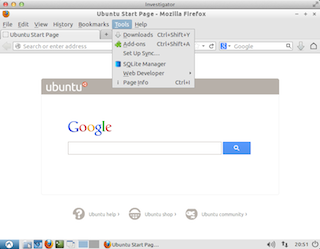
Add Firefox to the Panel.
And To Clean Up
sudo apt-get autoremove
sudo apt-get clean
Clean .bash_history
rm .bash_history && touch .bash_history
sudo reboot
To Configure The VM For Your Use
Set The Keyboard Type
Select Preferences > Keyboard Input Methods to launch the IBus Preferences application and select the Input Method tab to set the keyboard type.
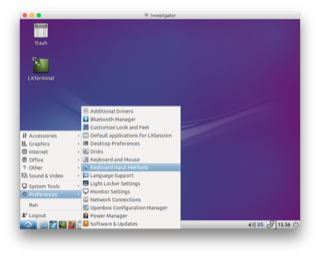
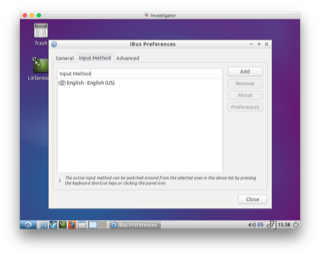
Set Display Size
The default VM has a display size of 800 x 600 pixels. Launch the Monitor Settings application in the Preferences menu to set the display size.
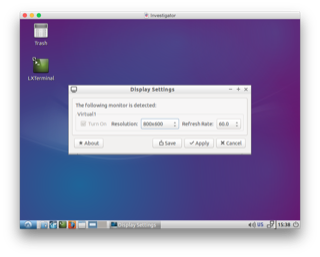
Set The Timezone
Launch the Date and Time application in the System Tools menu to set the timezone. Remember to Unlock the panel in order to make the changes.
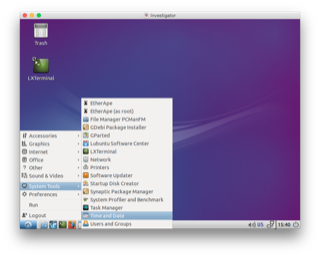
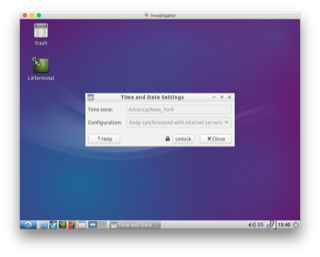
Set The Directory Sharing Between The Guest and The Host
When the VM is opened in VMware Fusion, open the Settings panel and select the Sharing tab. Click the + button and select the host folder you want to share with the VM. The folder will appear in the VM guest filesystem under the path /mnt/hgfs/{name}, e.g. /mnt/hgfs/Workspace, for the example shown. You can rename the guest folder in the VM by clicking on the name in the Shared Folders panel.
